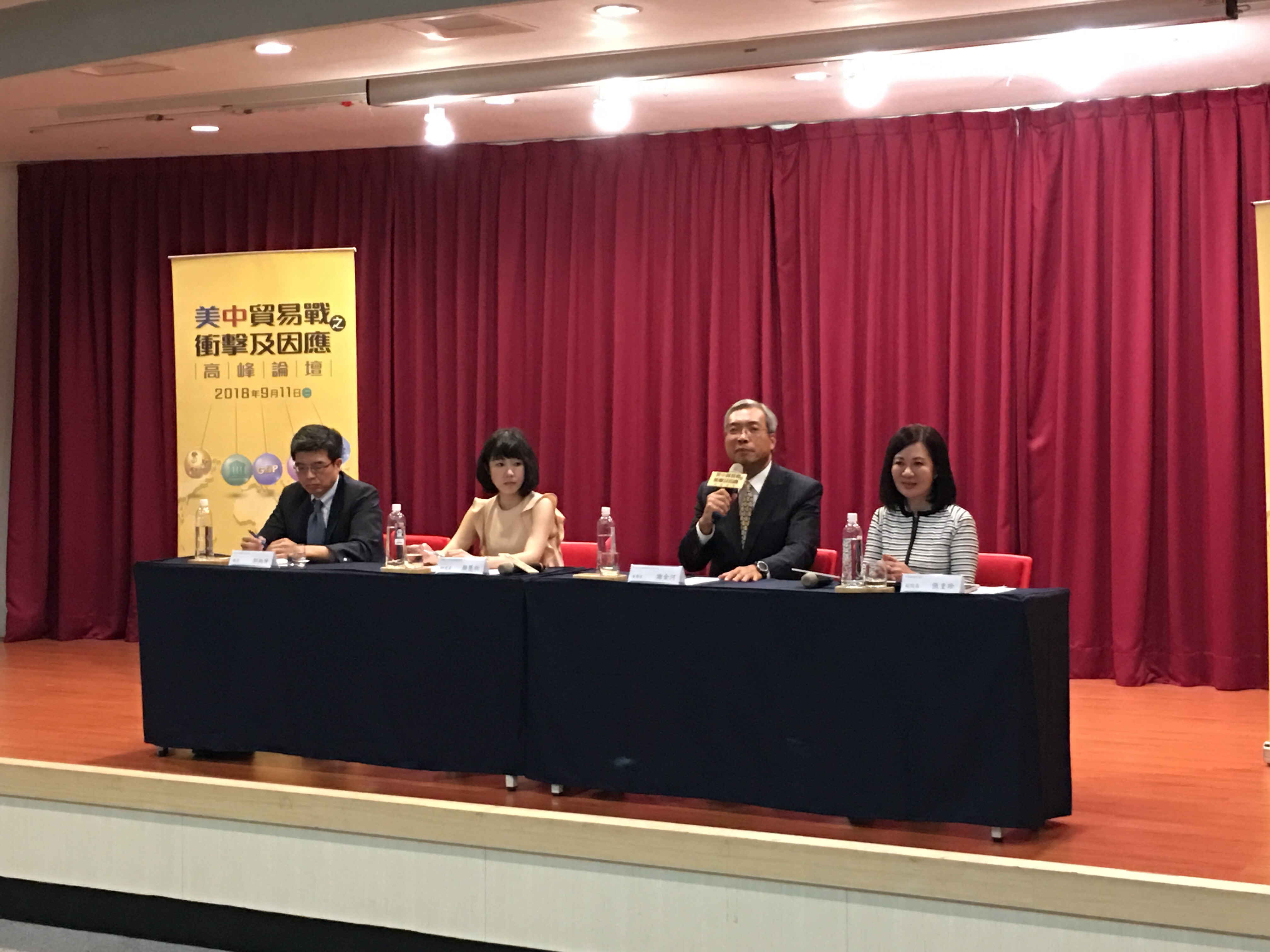The first “US-China Trade War Summit “ which was held by CDRI this afternoon (11th ) in Kaohsiung, co-organised by Institute for Information Industry and Corporate Synergy Development Center, 200 people from industry, government, academia participated. Professor Biing-Shen Kuo of Department of International Trade, NCCU, researcher Yen of CIER and Chairman Hsieh of Investment Media were all invited to “The impact and response of the US-China Trade War summit”. From the perspective of the exchange rate, Taiwan's industry and investment, and global stock market shocks, they provided a higher vision for the participants to care about international trade and Taiwan's industrial development, and to seek opportunities for transformation.
President Lung-Fa Hsieh of CDRI pointed out that according to WTO, Taiwan's participation rate of the global value chain is as high as 67.6%. For countries with high economic growth depending on foreign trade, regarding trade dependence, US trade dependence is 12%, China is 33%. Taiwan is as high as 95%; trade balance accounts for US GDP (-3.2%), China's 1.7%, and Taiwan's 12%. In other words, the uncertainty and changes brought about by the new economic and trade policy of the United States to the global manufacturing supply chain and multilateral economic and trade liberalization, will be put into considerations of Taiwan’s economic and trade development plan. The impact will be mostly reflected in the foreign exchange market, the stock market, the bond market, and the housing market.
Chairman Hsieh of Investment Media also explained that China transformed from a world factory to a country with factories spreading in the world, it is no longer a low-cost production base. The United States has also become a factory, in 2017, Chinese products exported to the United States worth 505.5 billion US dollars, American products exported to China worth 122.9 billion US dollars. With the join of Europe, New Zealand and Australia, the new economic and trade situation is changing. Since the start of the US-China trade war in March this year, there has been no panic in the international financial market. The gold trading price has dropped from $1,365.89 to $116.27, the US stock market has increased by $3.3 trillion, and the market value of the Shenzhen-Hong Kong stock market has dropped by 2.1 trillion. China's stock market fell, and the market value shrank, which may cause a real estate bubble. Compared with China, Taiwan dollar and the overall economic performance are good. In 2017, the GDP reached 2.86%, the GDP in the second quarter of 2018 became 3.29%, and the exchange rate of the New Taiwan dollar against the US dollar also rose from 29.116 to 30.458. The exporter's exchange profits were high.
The vice president Hwang-Jen Chang of CDRI talked about the industry in Taiwan: “ Many Taiwanese enterprises have global layouts. The impact of foreign exchange, the stock market and the housing market will likely trigger the restructuring of the industrial chain. The new foreign trade policy of the United States and China’s counter-measure may be an opportunity for Taiwan to replace the trade volume of Chinese products to the United States. However, tariffs are still the checkpoint for foreign trade. Therefore, the strategy of Taiwanese companies in the industrial chain allocation must be adjusted.

Chairman Hsieh of Investment Media (from the right), resident Lung-Fa Hsieh of CDRI, Professor Biing-Shen Kuo of NCCU, researcher Yen of CIER and vice president Hwang-Jen Chang of CDRI.
